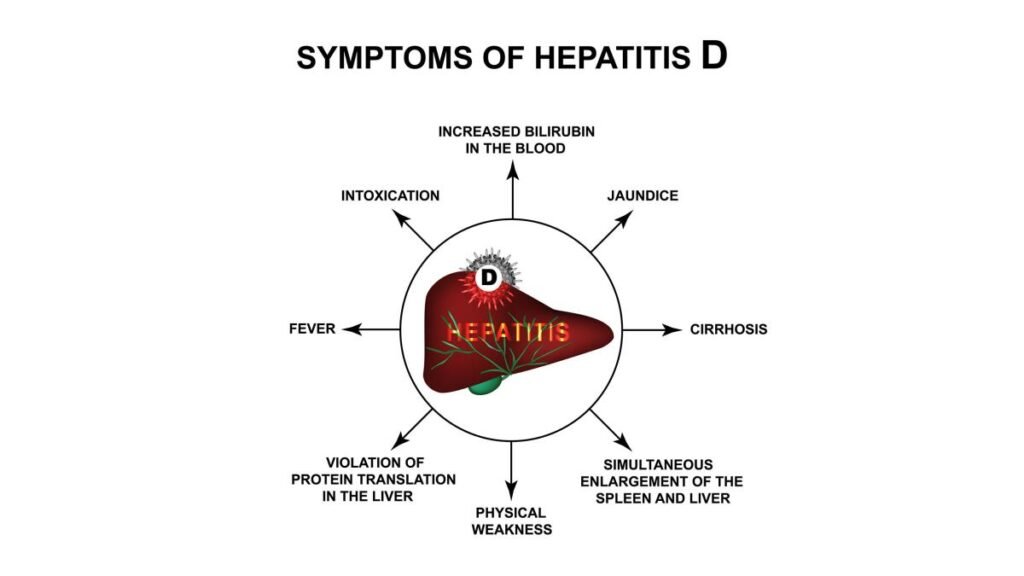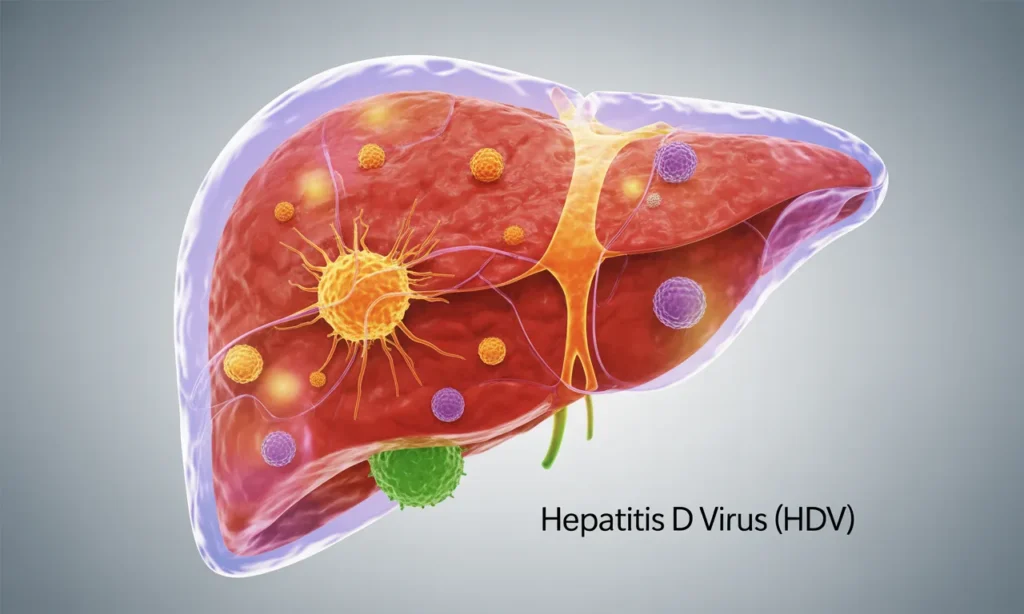Hepatitis D (HDV)
Hepatitis D Overview
Cause: Hepatitis D is a viral infection that only occurs in people who have hepatitis B. You cannot get hepatitis D by itself.
Timing of Infection:
You can get hepatitis D at the same time as hepatitis B (co-infection).
Or you can get it after already having hepatitis B (superinfection).
Effect on the Body: It affects the liver, causing inflammation and potentially worsening existing hepatitis B symptoms.

Symptoms and Causes
Hepatitis D symptoms are similar to other types of hepatitis and may include:
Fever
Abdominal (belly) pain
Nausea and vomiting
Loss of appetite
Dark urine
Pale or gray-colored stool
Yellowing of the skin or eyes (jaundice)

Cause of Hepatitis D
Hepatitis D is caused by the hepatitis D virus (HDV).
Requires hepatitis B: You can only get hepatitis D if you already have hepatitis B or get infected with both at the same time.
Infection can be acute (short-term) or chronic (lasting more than six months).

Risk Factors
Your odds of getting hepatitis D go up if you:
- Have hepatitis B
- Inject drugs
- Have sex with someone who has hepatitis B or D
- Have HIV and hepatitis B
- Are a man who has sex with other men

Hepatitis D Transmission
Hepatitis D virus (HDV) is unique because it can only infect people who already have hepatitis B virus (HBV). So transmission always involves exposure to blood or body fluids from someone infected with both HBV and HDV.
The main ways it spreads include:
- Sexual contact with someone who has HBV/HDV.
- Sharing needles or syringes used for drugs or medical purposes.
- Direct contact with infected blood through open cuts, sores, or accidental needle sticks.
- Sharing personal items that may have blood, like razors or toothbrushes.
- Mother-to-child transmission is rare but possible during birth.
Because HDV needs HBV to replicate, preventing hepatitis B with vaccination also protects against hepatitis D.
Hepatitis D Diagnosis
1. Medical history & physical exam
- Your doctor will ask about symptoms (like fatigue, jaundice, nausea) and risk factors (e.g., exposure to HBV, needle use, sexual activity).
- A physical exam may check for liver enlargement, tenderness, or signs of liver disease.
2. Blood tests
- Hepatitis B tests: Since HDV only infects people with HBV, doctors first confirm hepatitis B infection.
- HDV antibodies (anti-HDV): Detects if your immune system has responded to HDV.
- HDV RNA test: Confirms active viral replication and infection.
3. Liver function tests (LFTs)
- Measures enzymes like ALT and AST to see if the liver is inflamed or damaged.
4. Imaging tests
- Ultrasound, CT scan, or MRI can show liver damage, scarring (fibrosis), or cirrhosis.
5. Other specialized tests
- Sometimes a liver biopsy is done to assess the extent of liver damage, though this is less common now with advanced imaging and non-invasive fibrosis tests.
Hepatitis D Prevention
1. Vaccinate against heptitis B
The HBV vaccine indirectly protects you from HDV.
2. Avoid exposure to infected blood or body fluids
Don’t share needles or syringes.
Avoid sharing personal items like razors or toothbrushes.
Use gloves or take precautions when touching someone else’s open sores.
3. Safe sexual practices
Use protection and be aware of partners’ HBV/HDV status.
4. If you already have hepatitis B
Take extra care to prevent HDV infection.
Avoid alcohol and maintain a liver-friendly lifestyle.
Let healthcare providers know your HBV/HDV status to prevent transmission.
Avoid donating blood, tissue, organs, or other body fluids.
5. Healthy lifestyle choices
Balanced diet, regular check-ups, and avoiding liver stress can help slow disease progression if you’re already infected.
